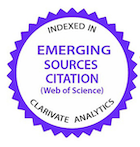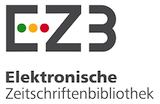MORPHOLOGICAL EVALUATION OF THE MALE REPRODUCTIVE SYSTEM OF TIGER (Panthera tigris)
DOI:
https://doi.org/10.5216/cab.v13i4.14346Keywords:
MorphologyAbstract
The wild felines comprise one of the animal groups under the greates risk of extinction. This case report aimed to describe the morphology of the reproductive organs of a male, adult tiger (Panthera tigris) that died during a surgical procedure. Fragments from scrotum, testis, epididymis, ductus deferens and penis were collected to macroscopic and microscopic analyses. Histologically, the reproductive organs were similar to other felines. The testis showed lateral asymmetry, with gonadosomatic index as 0.04, and the diameters presented by the seminiferous tubules and epididymal ducts were similar to those described for other species of wild felines. The penile urethra presented diameter of 1.73 mm and high caliber. The penis showed cornified papillae on the glans and other anatomical features described was similar to other felines.KEYWORDS: anatomy; histology; male reproductive system; wild felines.
Downloads
Download data is not yet available.
Published
2012-12-14
How to Cite
MEIRELES, Wesley Antunes; BERGQVIST, Renato Rezende; CONRADO, André Veiga; TROTTA, Mauricio de Rosa; AMBRÓSIO, Carlos Eduardo. MORPHOLOGICAL EVALUATION OF THE MALE REPRODUCTIVE SYSTEM OF TIGER (Panthera tigris). Brazilian Animal Science/ Ciência Animal Brasileira, Goiânia, v. 13, n. 4, p. 544–547, 2012. DOI: 10.5216/cab.v13i4.14346. Disponível em: https://revistas.ufg.br/vet/article/view/14346. Acesso em: 6 dec. 2025.
Issue
Section
Nota Científica
License
Copyright (c) 2012 Brazilian Animal Science/ Ciência Animal Brasileira

This work is licensed under a Creative Commons Attribution 4.0 International License.
Authors who publish with this journal agree to the following terms:
- Authors retain copyright and grant the journal right of first publication with the work simultaneously licensed under a Creative Commons Attribution License that allows others to share the work with an acknowledgement of the work's authorship and initial publication in this journal.
- Authors are able to enter into separate, additional contractual arrangements for the non-exclusive distribution of the journal's published version of the work (e.g., post it to an institutional repository or publish it in a book), with an acknowledgement of its initial publication in this journal.
- Authors are permitted and encouraged to post their work online (e.g. in institutional repositories or on their website) prior to and during the submission process, as it can lead to productive exchanges, as well as earlier and greater citation of published work (See The Effect of Open Access).































